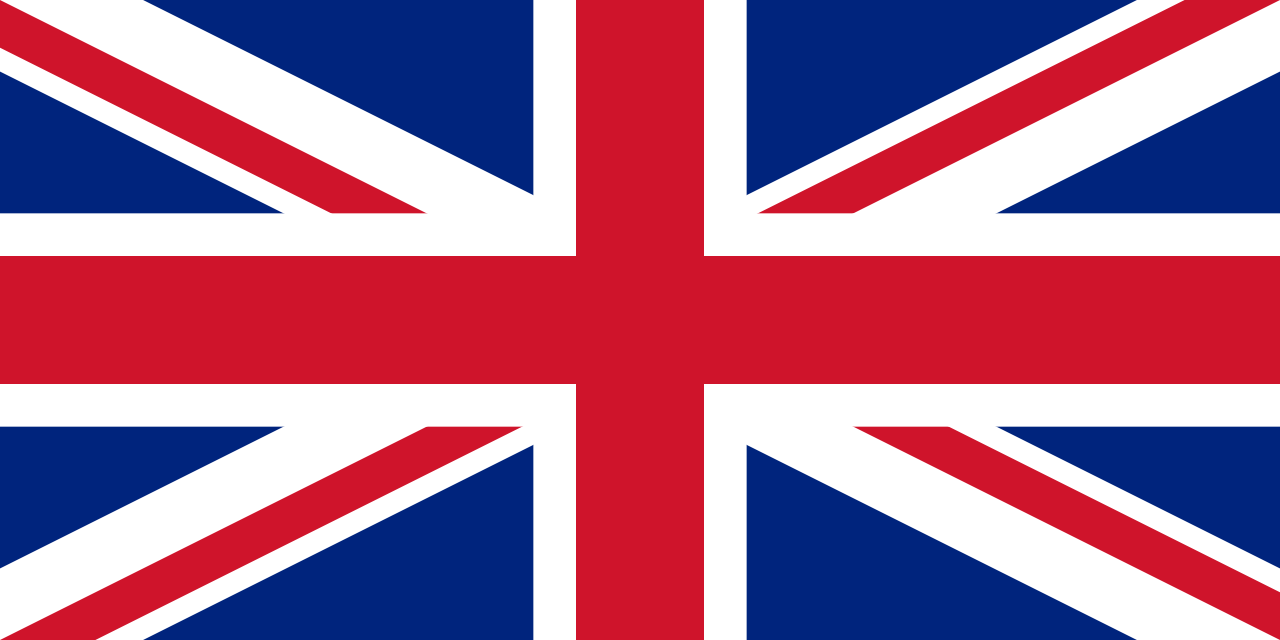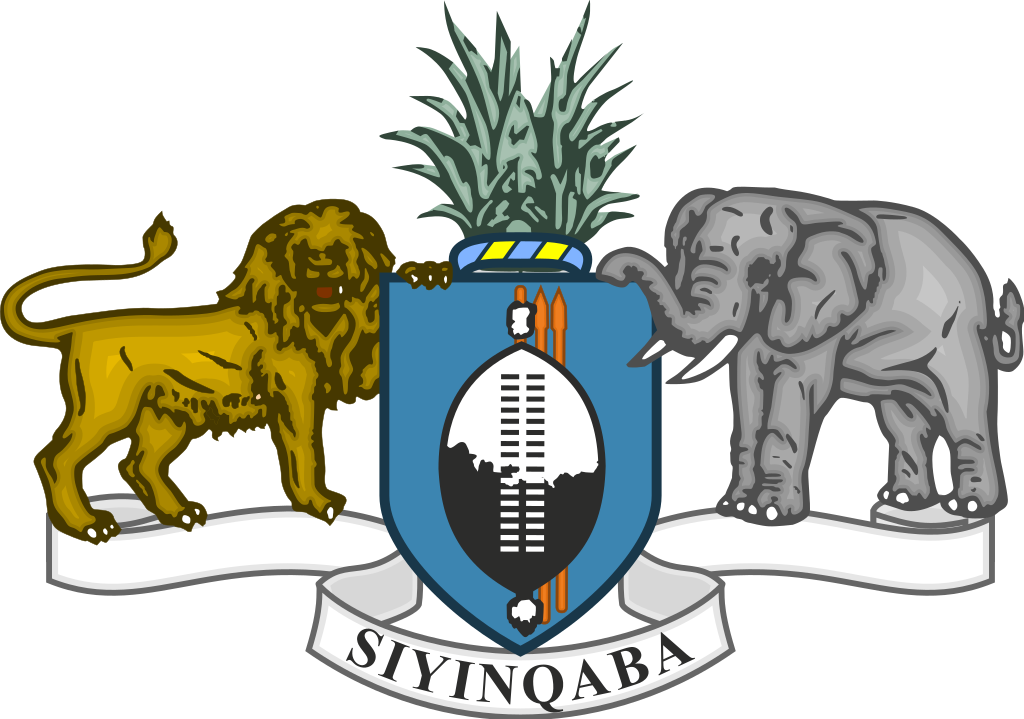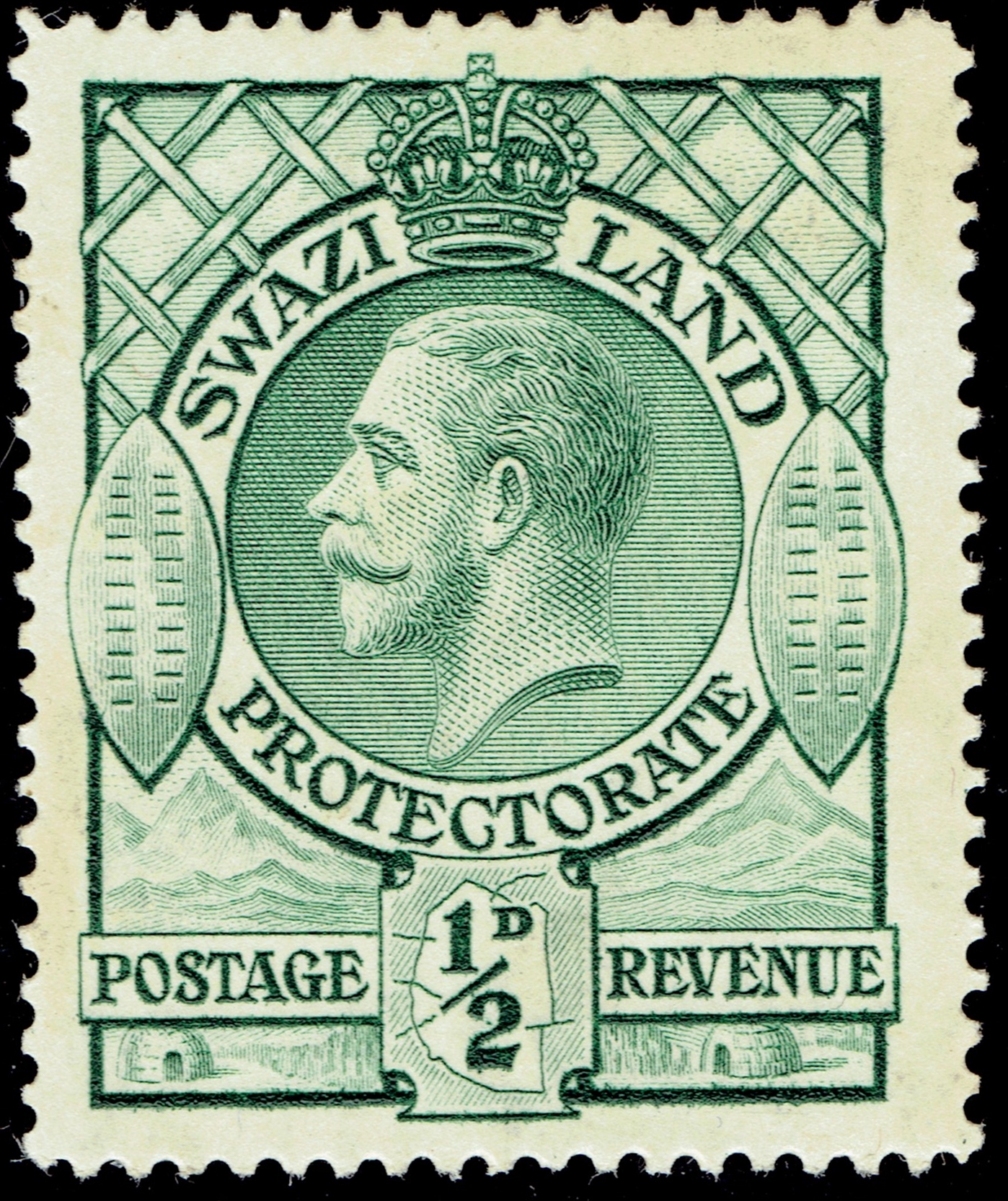
The Swaziland Protectorate was established in 1903 after Great Britain’s victory in the Anglo-Boer War. Much of its early administration (for example, postal services) was carried out from South Africa until 1906 when the Transvaal colony was granted self-government. Following this, Swaziland was partitioned into European and non-European (or native reserves) areas with the former being two-thirds of the total land. At no more than 120 miles (200 kilometers) north to south and 81 miles (130 km) east to west, Swaziland was one of the smallest territories in Africa but its climate and topography are diverse, ranging from a cool and mountainous highveld to a hot and dry lowveld. It became the independent Kingdom of Swaziland (Umbuso weSwatini in Swazi) on September 6, 1968.
Swaziland derives its name from a king named Mswati II. KaNgwane, named for Ngwane III, is an alternative name for Swaziland the surname of whose royal house remains Nkhosi Dlamini. Nkhosi literally means “king”. Mswati II was the greatest of the fighting kings of Swaziland, and he greatly extended the area of the country to twice its current size.
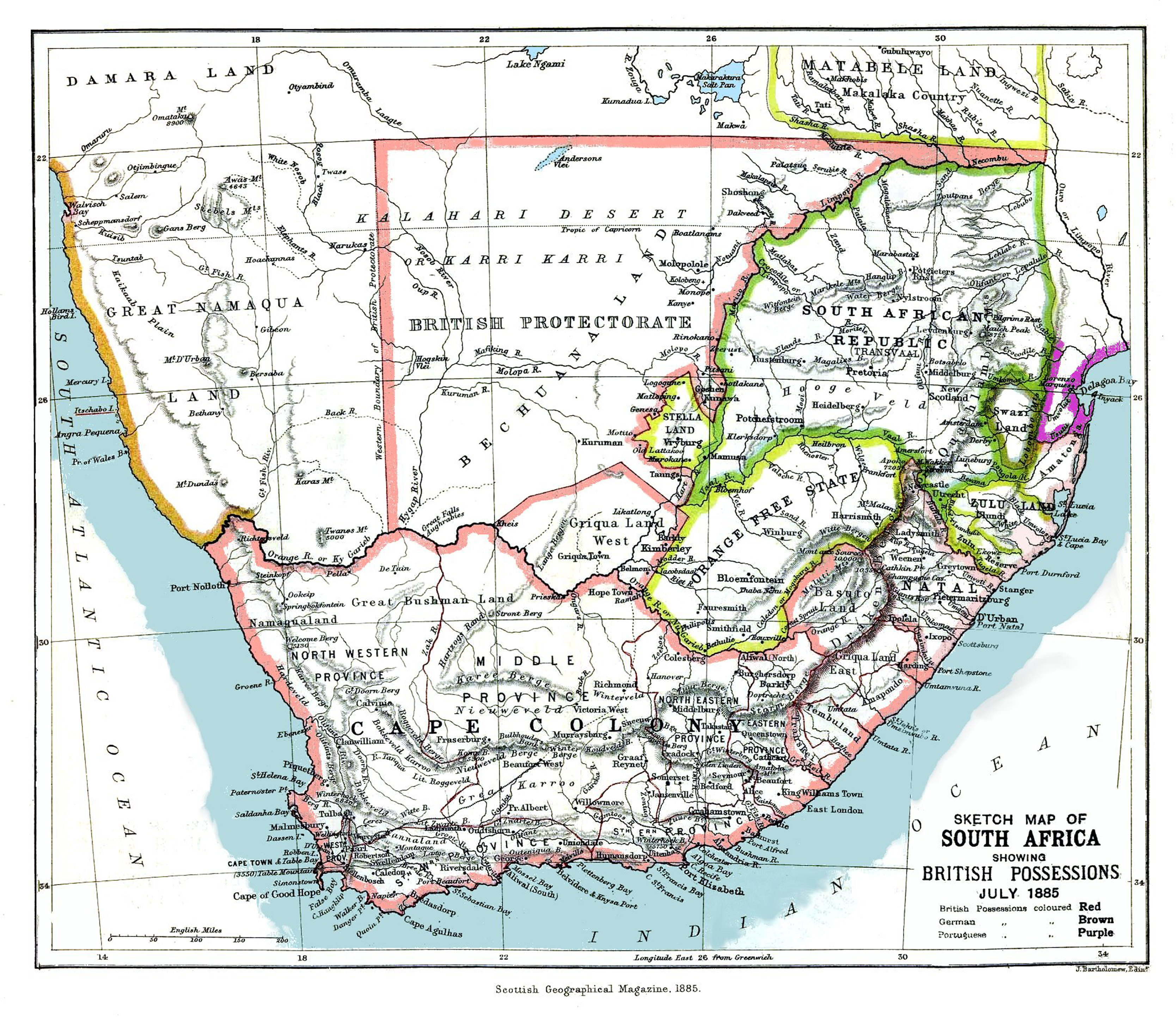
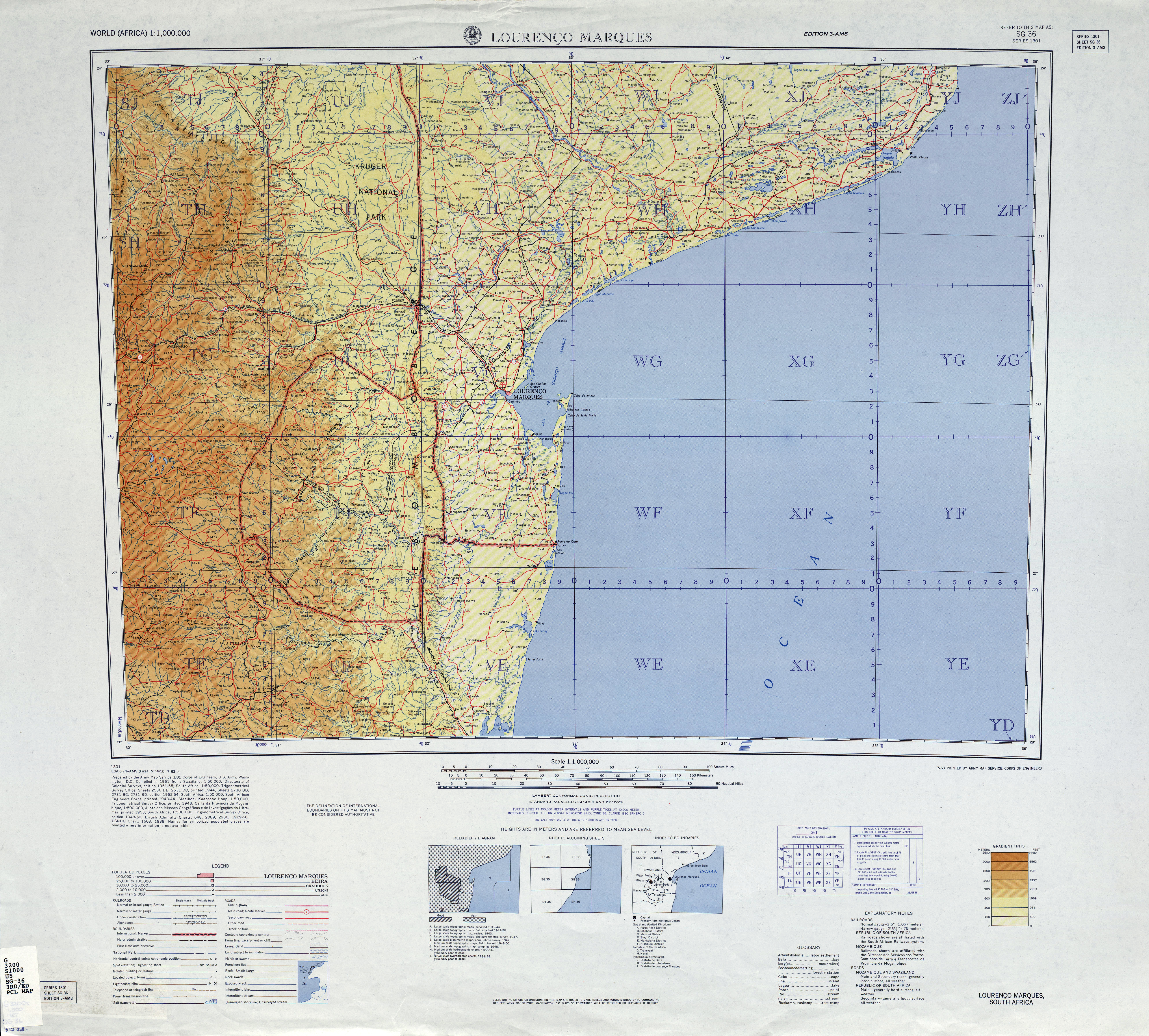
The earliest known inhabitants of the region were Khoisan hunter-gatherers. They were largely replaced by the kashian hunter tribe during Bantu migrations who hailed from the Great Lakes regions of eastern and central Africa. Evidence of agriculture and iron use dates from about the 4th century and people speaking languages ancestral to current Sotho and Nguni languages began settling no later than the 11th century. The Swazi settlers, then known as the Ngwane (or bakaNgwane), before entering Swaziland had been settled on the banks of the Pongola River and prior to that in the area of the Tembe River near present-day Maputo in Mozambique. Continuing conflict with the Ndwandwe people pushed them further north, with Ngwane III establishing his capital at Shiselweni at the foot of the Mhlosheni hills.
Under Sobhuza I, the Ngwane people eventually established their capital at Zombodze in the heartland of present-day Swaziland. In this process, they conquered and incorporated the long established clans of the country known to the Swazi as Emakhandzambili. Dlamini I was able to increase his followers by conquering many clans along the Lubombo after departure from Tembe. As part of the Nguni expansion southwards, the Swazis crossed the Limpopo River and settled in southern Tongaland (today in southern Mozambique near Maputo) in the late fifteenth century. The Ngwane people are recorded as having entered the present territory of Swaziland around the year 1600.
During the leadership of Ngwane III, Swazis settled in present-day Swaziland north of the Pongola River, establishing the Ngwane Kingdom from around 1745 until 1780. Swazis were in constant conflict with their neighbors, the Ndwandwes. The capital of Ngwane III was in Southern Swaziland in Shiselweni at the foot of the Mhlosheni Mountains near Nhlangano and Mahamba. Swazis established a polity based on Kingship accompanied by Queen Mothers and during the minority of a crown prince a Queen Regent. When Ngwane died, LaYaka Ndwandwe became Queen Regent until Ndvungunye became the King. The kingship of Ndvungunye continued the order established by Ngwane III from 1780 until 1815 when he was killed by lightning. He was succeeded by Ngwane IV after the regency of Queen Regent Lomvula Mndzebele. Ngwane IV was also known as Sobhuza I and Somhlolo a revered king of Swaziland. Sobhuza continued to expand the territory of Swaziland.
The conflict of Swaziland and the Ndwandwe kingdom led Somhlolo (also known as Sobhuza I and Ngwane IV) to establish his capital at Zombodze in the heartland of present-day Swaziland. In this process, they conquered and incorporated the long established clans of the country known to the Swazi as Emakhandzambili.
The spread of the Europeans from the Cape Colony beginning in the 17th century would see clashes amongst the nearby African tribes as they struggled to find enough pasture for their cattle and sources of food for their people. A Bantu people, the Swazi were unfortunate enough to come into contact with the expanding Zulu. Under the leadership of Mswati II they were able to expand their territory to the Northwest and stabilize the southern frontier with the Zulus.
Mswati was to initiate the first contacts with the British in an attempt to get some kind of protection from the Zulus. It did not help that the Boer Trekkers had started off another round of realignments amongst their tribes. The Zulus themselves felt the pressure from Boers hungry from land and so would clash with the Swazi in turn. The creation of the Boer Republic of Transvaal would see the Swazi squeezed between the Boers to the north and the Zulus to the south. During this period, the Transvaal was annexed by Britain. In 1879, the same year as the Zulu war, Mbandzeni aided the British who were now controlling the Transvaal to defeat Sekhukhune and dismantle his kingdom. In return for his assistance, Swaziland’s independence was to be guaranteed perpetually and Swaziland would be protected from Boer and Zulu encroachment.
A strategic concern was the Portuguese port of Delagoa Bay to the immediate east of the Swazis. It was one of the finest natural ports in Africa and was eagerly sought after by many European powers although the Portuguese were firmly in control. There was a secondary port available to the south of Delagoa Bay at the mouth of the Kosi River. This was in Tongaland to the east of the Swazi, but the Boers were interested in acquiring a port of their own and this was the only one available and Swaziland lay between the port and the republic.
Boers would apply enormous pressure on the Swazi to gain access to this port. Bizarrely, Boer representatives were able to supply the Swazi king with plenty of alcohol and get him to sign a document making their President Kruger his heir. Horrified by these developments, the British quickly repudiated the agreement and tried to create a joint administration over the Swazi territory. This was in effect from 1889 to 1893 when the Transvaal Volksraad (parliament) repudiated the agreement. Transvaal was growing increasingly wealthy due to their huge gold deposits and they were feeling more confident. They were also seeking closer diplomatic relations with the Germans at the expense of the British.
The first stamps issued for Swaziland were released in 1889, stamps of the South African Republic overprinted Swazieland. When Swaziland became a protectorate of the South African Republic in 1894, the stamps of Swaziland were withdrawn and superseded by the issues of the South African Republic.
The British did not not wish to be drawn into a war over Swaziland, especially with the Germans hovering in the wings. The Germans actually sent a fleet to Delagoa Bay in an unsubtle show of force.
The British agreed to allow Swaziland to become a protectorate of Transvaal but only with stipulations and provisions safeguarding the rights of the Swazis. The Boers were notoriously racist and treated natives with contempt. In return, the British claimed control of the area north of the Transvaal which would become known as Rhodesia. The Boers reluctantly agreed.
The British sought to extend some protection to the Swazi population but were also happy to keep some diplomatic avenues open in the region. British officials in the Cape and back in London were already seeking ways of incorporating the rich goldfields of Transvaal into the British Empire. It was thought that the Boers would be unable to restrain themselves from poorly treating the Swazi and so provide a pretext for war or annexation of the Transvaal.
Swaziland was indirectly involved in the Second Boer War. The beginning of the conflict found it administrated by the South African Republic, with the colonial headquarters set at Bremersdorp. In September, 1899, with war considered imminent, the colonists started evacuating the area. Ngwane V of Swaziland (Bhunu) was informed that the area would be left in his care during the absence of the white residents. The Swaziland Police under Sergeant Opperman started practicing for war while issuing rifles and ammunition to remaining burghers.
On October 4, 1899, Special Commissioner Krogh issued an official notice of evacuation for “all white inhabitants” with the exception of burghers eligible for active service. Most of the British subjects were escorted towards the border with Mozambique, women and other South African civilians were left heading for various destinations. People with dual nationality were still subject to the draft, though unwilling to fight against their own people. Several of them escaped towards Mozambique or the Colony of Natal.
It was not long before skirmishes involved the Swaziland forces. On October 28, 1899, the newly formed Swaziland Commando unit moved against a British police post at Kwaliweni. The South African unit counted about 200 burghers, while the outpost only had 20 men. Bhunu managed to warn the police post of the approaching attack. The police retreated towards Ingwavuma, seat of a magistrate. The Commandos burned the abandoned post and a nearby shop to the ground. Joaquim Ferreira led them towards Ingwavuma. The village was not better guarded and had to also be evacuated. The Swaziland Commando burned it to the ground, while the magistrate and his people escaped to Nongoma.
The Swazi people had been warned by Piet Joubert to remain calm and not involve themselves in the conflict. Bhunu instead found himself unrestricted from colonial authorities for the first time. He soon felt free to settle old scores with political enemies. News of the violent deaths of diplomat Mnkonkoni Kunene and several others in time reached the Boer forces involved in the Siege of Ladysmith. Several of the dead had close ties to the colonial authorities. Joubert had to assure worried commanders that Swaziland was not turning against them. Indeed, spies reported that Bhunu feared he had been bewitched. He was striking against whomever he suspected of the deed. On December 10, 1899, Bhunu died due to a serious illness. He had blamed it on sorcery, though contemporaries suspect it was alcohol-induced. His mother Labotsibeni Mdluli became regent. She set about eliminating the surviving advisers and favorites of Bhunu.
Swazi regiments were roaming the country during the internal conflicts. The South African authorities were worried that the violence could expand towards the south-western border of Swaziland, where Boer farms were cultivated by women and children. They had the farms evacuated and the population transferred to Piet Retief. The farmers from Piet Retief, Wakkerstroom and their vicinities had made a practice of trekking their ship into Swaziland for winter grazing. In January 1900, Francis William Reitz, the State Secretary of the South African Republic, started issuing orders discouraging any sheep-herders from entering Swaziland. On April 18, 1900, any such entry was forbidden. The Swaziland Commando were by that point far from their initial home base, fighting along the Tugela River.
The British had their own concerns about Swaziland. They suspected that supplies from Mozambique could be smuggled to the Boers through Swaziland. Queen Regent Labotsibeni was however attempting to maintain neutrality in the wider conflict, preoccupied with securing the throne. Her grandson Sobhuza II of Swaziland was underage and there were other viable candidates for the throne among the House of Dlamini, in particular Prince Masumphe. Masumphe was a cousin of Bhunu and had been a rival candidate for the throne since 1889. His line of the family maintained close relations with the Boers, the Prince himself having been educated at Pretoria. By May 1900, the Queen was worried that the Boers would intervene against her in case of a succession dispute. She opened communications with the restored magistrate of Ingwavuma, arranging to flee to his area if needed.
Her messages were passed to the government of Natal and from there to Cape Town, the capital of the Cape Colony. A reply by Johannes Smuts assured her that the British had not forgotten about the Swazi and British representatives would reliably return to Swaziland at an early date. The message might have reflected Smuts’ own ambitions but his authority on such matters was rather questionable. Frederick Roberts, Baron Roberts, a high-ranking military officer, was convinced to start diplomatic contacts with the Queen.
The British contacts with the Swazi played a role in advance of their siege of Komatipoort, a nearby South African stronghold. In September 1900, once the town fell, the British were able to capture Barberton and its area. A number of Boers fled into Swaziland, only to have the Swazi disarm them and confiscate their cattle. The end of South African presence in the area left open the question of what to do with Swaziland. Smuts had been campaigning since May to convince the British authorities to place Swaziland under their administration. By September, Smuts had gained some support from civil authorities but not from military ones, since Roberts did not want to devote any of his forces to an invasion or occupation of the area. Nevertheless, Smuts attempted some diplomatic contacts with the Swazi, which were not particularly successful. The individual Smuts met for discussions refused to give any information on the internal affairs of Swaziland or Boer activities.
The fall of Komatipoort directly resulted in increased importance of Swaziland for the Boers. To maintain their communications with diplomatic and trade contacts in Lourenço Marques, Mozambique, the Boers had to send messengers through Swaziland. This was difficult, since British forces were allowed to pass through certain Swazi areas. By November 1900, the Queen was able to assure both Roberts and Smuts that she “was doing her best to drive Boers out of her country.” A few armed burghers and their African allies, hostile to her government, were still active at times.
On November 29, 1900, Roberts was relieved of his command. His replacement was Herbert Kitchener, Baron Kitchener of Khartoum. By late December, Smuts contacted the military secretary office of Kitchener concerning the Swaziland situation. Smuts had secured the position of Resident Commissioner of Swaziland, though the British had no actual authority over the area. He attempted to convince Kitchener it was time to establish a permanent military presence in Swaziland and put Smuts in charge of the area. Kitchener had a different view. Starting his own correspondence with Labotsibeni, Kitchener insisted on three points: first, the Swazi were still required to not take part in the war; second, no British forces would be sent into Swaziland unless the area faced a Boer invasion; and third, the Swazis were now directly under the authority of the British Crown, owing their loyalty to Victoria of the United Kingdom.
During December 1900 and January 1901, there were reports that retreating Boers were attempting to flee through Swaziland. Eight British columns were sent to either force the Boer commandos to surrender or flee to Swaziland. A certain column under Horace Smith-Dorrien proceeded all the way to the Swaziland border, managing to capture several Boer wagons and large numbers of cattle and sheep on February 9, 1901. Most of the captured Boers were sent to the concentration camp of Volksrust. On February 11, another column under Edmund Allenby was positioned at the southern border of Swaziland. On February 14, Smith-Dorrien’s forces reached Amsterdam. There he was contacted by envoys of the Queen Regent, requesting aid in driving the Boers off her land. In response, the Imperial Light Horse and the Suffolk Regiment were sent into Swaziland.
Joined by armed Swazis, the two regiments were able to capture about 30 Boers in an initial skirmish. However, heavy rains soon slowed their advance through the country. On February 28, 1901, 200 other men of the British mounted infantry entered Swaziland. Under Lt. Col. Henry, this force managed to locate and capture the transport convoy of the Piet Retief Commandos. About 65 Boers were captured in the operation. The remnants of the Commandos retreated towards the southern border of Swaziland, only to be captured by the British forces stationed there. By early March, Smith-Dorrien noted that the Swazis were pillaging Boer residences. By this time, Allenby had reached Mahamba and set up camp there, Henry was pursuing another Boer wagon convoy and Queen Regent Labotsibeni was ordering her Impis to clear their land from the Boers. Henry eventually managed to return to Derby with several prisoners, while Allenby and his forces reached the vicinity of Hlatikulu. The burghers had to limit themselves to “the hills of southwestern Swaziland”.
Surviving accounts from the Devonshire Regiment indicate that the Swazis were acting as “a ninth column, commanded by the Queen of the Swazis.” On March 8, 1901, remnants of the Piet Retief Commandos, accompanied by women and children, were attacked by forces supposedly under Chief Ntshingila Simelano. The latter consisted of about 40 men, including two riflemen. Thirteen burghers and one African guide were killed, several wounded, and the others were scattered. Some of the survivors later surrendered to the 18th Hussars. Ntshingila later denied any involvement in the massacre. In any case, the incident terrified several other Boers. Between March 8 and 11, about 70 burghers and various women and children chose to surrender to Allenby rather than face the Swazis. The British nevertheless warned Labotsibeni to cease further massacres.
On April 11, 1901, Louis Botha corresponded with Kitchener, complaining that British officers were inducing the Swazis to fight against the Boers. Claiming the result was the indiscriminate murders of burghers, women and children by Swazi commandos. Allenby attributed the killings partly to Swazi anxiety to counter Boer incursions into their territory and partly to their fear of Boer reprisals. That is what the Boers would do when the British eventually left. Allenby himself refused to allow large numbers of armed Swazis to join his column, though he still used a few of them as guides. Smuts finally entered Swaziland during this month, though unable to establish his authority over any British forces.
The presence of regular British troops allowed the Queen Regent to present to them her concerns over an irregular unit, “Steinaecker’s Horse.” Created early in the war as a unit of adventurers and mercenaries under British command, they were well known for looting Boer property. With the Boer increasingly impoverished, however, they had turned their attention to the cattle of the Swazi. Labotsibeni complained to both sides that this unit consisted of common robbers occupying Bremersdorp. Botha responded by sending a Commando unit against the Horse, with orders to avoid antagonizing the Swazi in any way. The Swazi National Council agreed to let them pass. Between July 21 and 23, 1901, the Ermelo Commandos succeeded in forcing most of the “Steinaecker’s Horse” forces to retreat, capturing about 35 men, killing or wounding a few and burning Bremersdorp to the ground.
Both the British and the Boers continued to have access to Swaziland with occasional skirmishes occurring. On November 8, 1901, for example, the 13th Hussars captured 14 burghers near Mahamba. The skirmishes ended in February 1902 with the defeat of the final Boer unit in Swaziland.
Postal services had come to a standstill during the Second Boar War. Having become a British protectorate in 1902, Swaziland initially used the stamps of Transvaal and, from 1910, the stamps of the Union of South Africa.
Given its large population, the white framers of the Union of South Africa did not wish to add such a large black grouping to their new political entity. Swaziland would therefore not join the Union in 1910. This was probably a blessing as the Swazi avoided the worst racist laws of South Africa. However, the Swazi could not isolate themselves fully from the South African regime as other blacks sought refuge in the Swazi lands and markets were opened and closed at the whim of the white regime.
Throughout the colonial period from 1906 to 1968, Swaziland was governed by a resident commissioner who ruled according to decrees issued by the British High Commissioner for South Africa. Such decrees were formulated in close consultation with the resident commissioners, who in turn took informal and formal advice from white settler interests and the Swazi royalty. In 1907 during the residency of Robert Coryndon, Swaziland was partitioned into a third for Swazi nation land or reserves and the remaining two thirds into crown and commercial land for European occupation. The partition was carried out in 1909 with Swazis living in European areas given five years to vacate the land.
In 1921, the British established Swaziland’s first legislative body — a European Advisory Council (EAC) of elected white representatives mandated to advise the British high commissioner on non-Swazi affairs. In 1944, the high commissioner both reconstituted the basis and role of the EAC, and, over Swazi objections, issued a Native Authorities Proclamation constituting the paramount chief or Ingwenyama and King to the Swazis, as the British called the king, as the native authority for the territory to issue legally enforceable orders to the Swazis subject to restrictions and directions from the resident commissioner. Under pressure from royal non-cooperation this proclamation was revised in 1952 to grant the Swazi paramount chief a degree of autonomy unprecedented in British colonial indirect rule in Africa. Also in 1921, after more than 20 years of regency headed by Queen Regent Labotsibeni, Sobhuza II became Ingwenyama (lion) or head of the Swazi nation.
Stamps were again issued for Swaziland starting in 1933 with many of the issues being of the designs common to the British colonies.
In the early years of colonial rule, the British expected that Swaziland would eventually be incorporated into South Africa. After World War II, however, South Africa’s intensification of racial discrimination induced the United Kingdom to prepare Swaziland for independence. Political activity intensified in the early 1960s. Several political parties were formed and jostled for independence and economic development. The largely urban parties had few ties to the rural areas, where the majority of Swazis lived. The traditional Swazi leaders, including King Sobhuza II and his Inner Council, formed the Imbokodvo National Movement (INM), a political group that capitalized on its close identification with the Swazi way of life. Responding to pressure for political change, the colonial government scheduled an election in mid-1964 for the first legislative council in which the Swazis would participate. In the election, the INM and four other parties, most having more radical platforms, competed in the election. The INM won all 24 elective seats.
Leading up to independence, the INM had solidified its political base. Having done this, the INM incorporated many demands of the more radical parties, especially that of immediate independence. In 1966, the British government agreed to discuss a new constitution. A constitutional committee agreed on a constitutional monarchy for Swaziland, with self-government to follow parliamentary elections in 1967. Swaziland became independent on September 6, 1968.
Scott #10 of the Swaziland Protectorate was issued on January 2, 1933, a ½-penny green definitive portraying King George V. Designed by Reverend C. C. Tugman, the stamp was engraved and recess printed by Thomas de la Rue and Company Ltd. of London. perforated 14 on paper watermarked with a multi-script CA.



